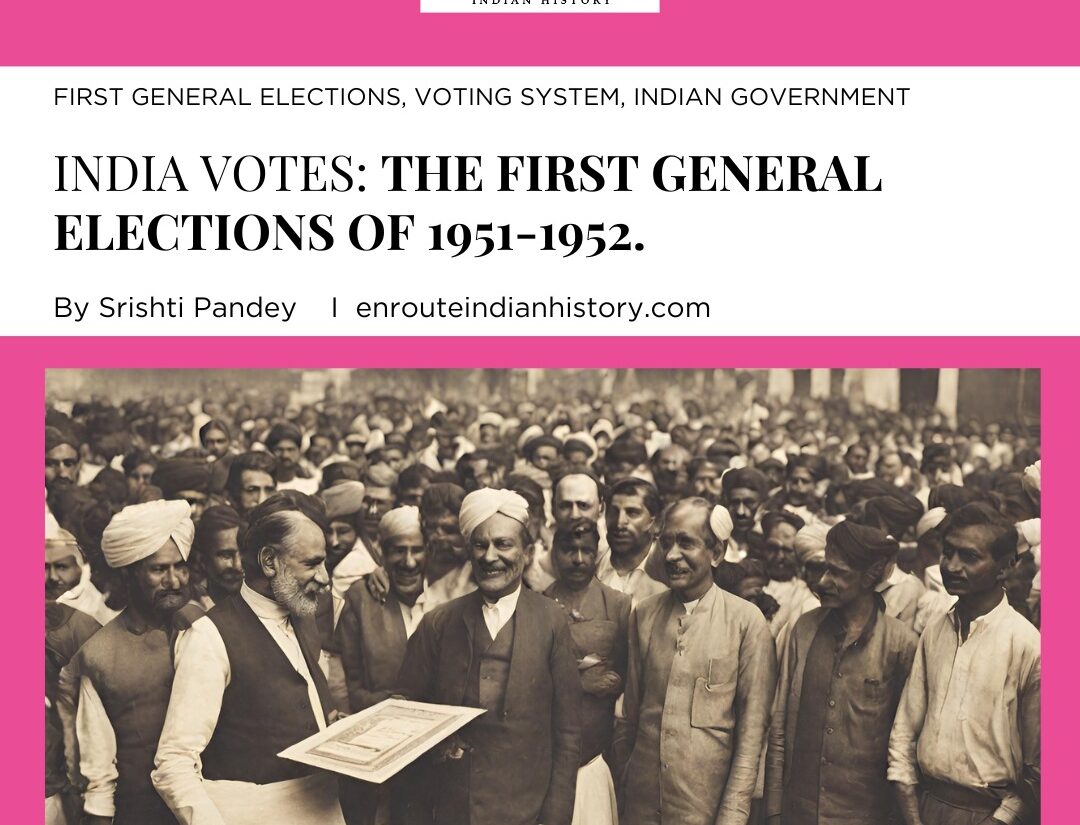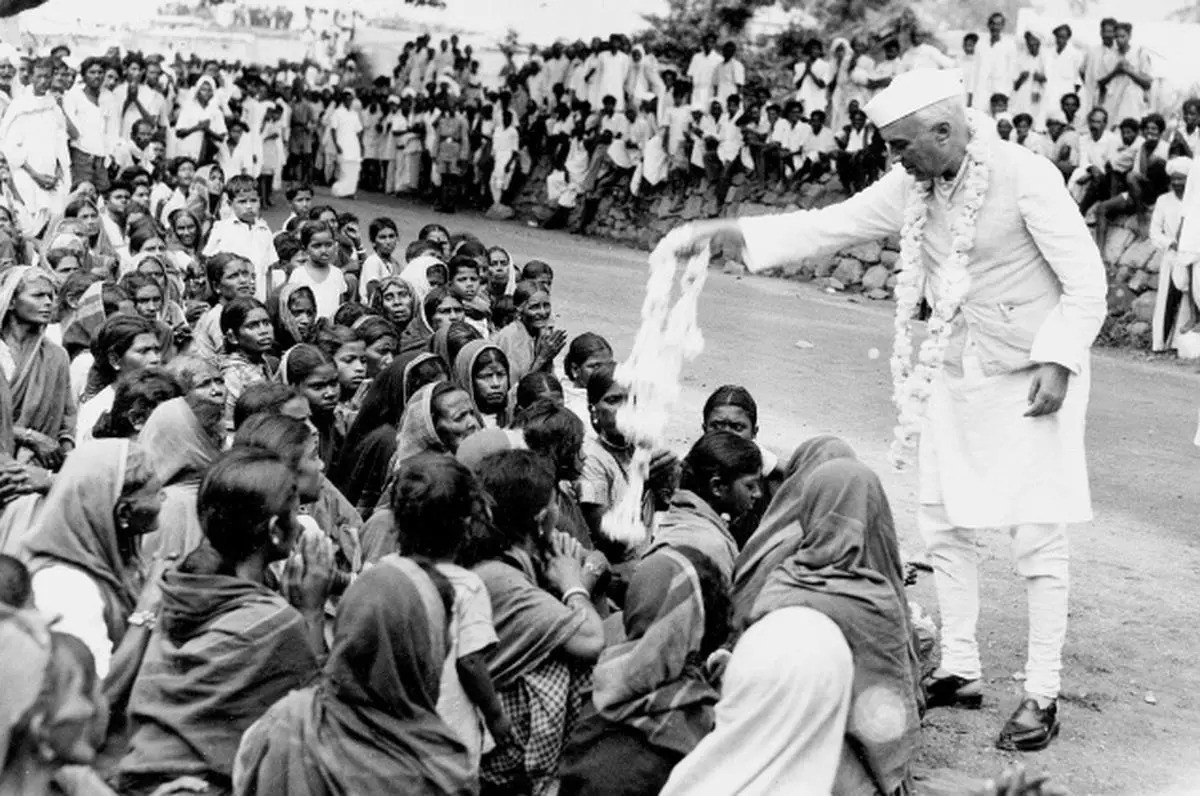
India, the world’s largest democracy, operates under a robust electoral system. The Indian government is determined through periodic voting by citizens, occurring every five years (unless exceptional circumstances necessitate early elections). These elections, known as general elections, coexist with state elections, which also take place every five years. Over time, technological advancements and national progress have significantly transformed the electoral process. The Election Commission of India meticulously oversees these elections, ensuring a seamless voting system that ultimately shapes the composition of the Indian government.

The journey of Indian elections can be traced back to their inception in October 1951. In 1950, India was declared a republic following the implementation of the constitution on January 26, 1950. The first general elections in our country took place between October 25, 1951, and February 21, 1952. Prior to these elections, India operated as a constitutional monarchy under King George VI, with Louis Mountbatten serving as the governor general. The Constituent Assembly, led by Pandit Jawaharlal Nehru, played a pivotal role in shaping the electoral process. Although the groundwork for elections was laid, the formal rules were officially implemented on January 26, 1950 coinciding with India’s transition to a republic.

The Election Commission of India was established, and India appointed its first Election Commissioner, Mr. Sukumar Sen. As a civil servant, Mr. Sen played a pivotal role in conducting India’s inaugural General elections. Despite his significant contributions, Mr. Sen remains an unsung hero. Unfortunately, there is limited information available about him due to the absence of memoirs and official papers. However, we do know that he was born in 1889 and received his education at the Presidency College and the University of London, where he earned a gold medal in Mathematics. In 1921, he joined the Indian Civil Services and served as a judge in various districts. His tenure in West Bengal began in 1947.

The first general elections in India were not without their share of challenges. At that time, the country’s population stood at a staggering 360 million. With the introduction of universal suffrage, approximately 173 million citizens aged 21 and above became eligible to cast their votes. However, a significant hurdle arose due to the fact that 85% of these potential voters were illiterate.
The Election Commission faced the daunting task of identifying and registering these voters. Additionally, the construction of polling booths posed another challenge. In the first general elections, a total of 4,500 seats across the country. The parliamentary seats numbered 500, while the remaining seats were allocated to state assemblies.
To accommodate this massive electoral exercise, an extensive network of voting stations was designed. A staggering 2,24,000 polling booths were established across 1,96,084 polling stations. Notably, 27,572 of these booths were reserved exclusively for women voters. The logistics were immense: two million steel ballot boxes were required, and a workforce of 16,500 clerks diligently typed and collated the electoral rolls.
Furthermore, approximately 56,000 presiding officers were appointed to oversee the proceedings, supported by additional auxiliary staff. Despite these formidable challenges, India successfully conducted its first general elections, marking a historic milestone in the nation’s democratic journey
The lead-up to India’s first general elections encountered a significant challenge related to women voters in northern India. Many women hesitated to reveal their names, identifying themselves solely as someone’s wife or mother. Mr. Sukumar Sen, the first Chief Election Commissioner of India, encouraged everyone to provide their names. Despite his efforts, approximately 2.8 million names were eventually struck off the voter list due to this reluctance.

These first general elections held historical and political significance. For the first time, Indian citizens, including women, exercised their right to vote. This stands in contrast to the West, where women had to fight for suffrage rights (as seen in movements like the Suffragette movement in England).
In preparation for the smooth functioning of the voting system during India’s first general elections, several measures were taken. Bridges were constructed to ensure that ballots could reach remote polling booths in villages across the country. Additionally, the election symbols played a crucial role. These symbols were large pictorial representations designed for easy comprehension by the masses. People could readily associate themselves with these visual symbols.
To facilitate this process, a conference was convened by the Election Commission on July 30, 1951. Representatives from major political parties participated, and each party selected its preferred symbols. The allocation of symbols took place on August 2, 1951 with additional assignments occurring until September 7, 1951. Some symbols were reserved exclusively for political parties, while others remained available for independent candidates.
The first general elections in India, held between 25th October 1951 and 21st February 1952, marked a significant milestone after India’s independence in 1947. During these elections, voters elected the 489 members of the first Lok Sabha, which constituted the lower house of the Indian Parliament. Simultaneously, elections were conducted for most state legislatures.
Here are some key aspects of those historic elections:
1. Symbolic Ballot Boxes:
- Each candidate was assigned a different coloured ballot box at the polling booth.
- The candidate’s name and symbol were prominently displayed on these boxes.
2. Indelible Ink:
- To prevent multiple voting by the same person, indelible ink was used.
- The forefinger on the left hand of every voter was marked with this ink.
- The ink was designed to last for at least a week.
- The Indian Council of Scientific and Industrial Research manufactured this ink.
3. Quantity of Ink:
- A total of 3,89,816 phials of indelible ink were supplied to the states.
- The cost for this ink amounted to Rs. 2,27,460 (as per the report on the first general elections).
4. Preparation by the Election Commission:
- The Election Commission meticulously prepared a list of all materials required for the elections.
- These materials ranged from ballot boxes and ballot papers to ink pads and sealing wax.
The sheer scale of these elections was immense, with 1,73,212,343 registered voters (excluding Jammu and Kashmir) out of a population of 361,088,090 according to the 1951 census. It remains one of the largest elections conducted in the world at that time.
The first general elections in India, held between 25th October 1951 and 21st February 1952, were a momentous occasion for the newly independent nation. During this historic event, political leaders engaged in extensive campaigning, urging citizens to exercise their right to vote. Among those who participated was Mr. Shyam Saran Negi, a school teacher from Himachal Pradesh. His name would forever be etched in history as the first voter in India’s democratic journey.
Mr. Negi, affectionately known as ‘Master Shyam’, cast his vote at the Shanthong polling station. Himachal Pradesh was the first state to go to the polls due to its challenging winter conditions. The elections spanned several months, commencing in October 1951 and concluding in February 1952. This monumental event was not only a triumph for the voters but also a testament to the meticulous planning and execution by the Election Commission. Today, India celebrates these elections as the biggest festival of democracy
The first general elections in India, held between 25th October 1951 and 21st February 1952, were a monumental event for the newly independent nation. Here are some fascinating details about this historic electoral process:
1. Voting Sequence:
- The voting process kicked off in the tehsils of Chini and Pangi in Himachal Pradesh.
- Following their lead, the state of Bilaspur went to the polls.
- In December 1951, voting commenced in Travancore-Cochin, Orissa, Madhya Pradesh, Hyderabad, and Punjab.
- The remaining states cast their votes in January 1952, except for the hilly regions of Uttar Pradesh, which voted in February 1952 after the snow melted.
2. High Turnout in Orissa:
- Orissa witnessed the highest voter turnout at 70%.
- Tribal communities participated enthusiastically, even bearing their bows and arrows to cast their votes.
3. Mumbai’s Vibrant Participation:
- The financial capital of India, Bombay (now Mumbai), saw a close-to-70% turnout across its 1,349 polling stations.
4. Remote Mizo Hills:
- The Mizo hills, now known as Lushai Hills, lie in a tribal area bordering erstwhile East Pakistan and Burma.
- These hills hosted 118 polling booths spread over an area of 20,720 square kilometers (8,000 square miles).
- The motivation to vote was so high among the 92,000 villagers that they trekked through jungles for days, camping at night and celebrating with singing and community dancing around fires.
5. Challenges in Rajasthan:
- In Jalore and Barmer, where roads were absent, army trucks assisted in escorting polling officers.
- In Jaisalmer and Jodhpur, camels were hired for the officers’ mobility, creating a unique caravan of democracy.
The first general elections in India, held between 25th October 1951 and 21st February 1952, witnessed a spirited contest among several prominent political parties. Notable participants included:
- Indian National Congress (INC):The INC emerged as the dominant force, securing 364 seats and receiving 44.99% of the popular vote in the Lok Sabha.
- Communist Party of India (CPI): The CPI won 16 seats with 3.29% of the vote.
- Socialist Party: The Socialist Party, which laid the roots for the later Janata Party, secured 12 seats with 10.59% of the vote.
Kisan Mazdoor Praja Party (KMPP), Bhartiya Jan Sangh (BJS), and Akhil Bhartiya Hindu Mahasabha also participated in the elections. These elections marked a significant moment, with 14 parties achieving national party status out of the 53 contesting parties. The election symbols were diverse, ranging from a pair of oxen carrying a yoke (INC) to ears of corn on a sickle (CPI) and even a tree (the Socialist Party). These elections marked a significant milestone in India’s democratic history, with a massive voter turnout of around 45%.
The first general election in India, which elected independent India’s inaugural Indian Government, was led by Pandit Jawaharlal Nehru, who became the country’s first Prime Minister. The Election Commission played a pivotal role in ensuring the successful implementation of universal adult franchise. This achievement was made possible by integrating refugees into the electoral process and granting voting rights to women. The Representation of People Act of 1950 stipulated that all citizens aged 21 years or older, who had resided in India for a minimum of 180 days, were eligible to cast their votes. This historic election marked a significant milestone in India’s democratic journey.
During the first census of Independent India conducted between 9th and 28th February 1951, the parliamentary constituencies were officially finalized. This momentous occasion marked the country’s first experience in designing party symbols, ballot papers, and even the ballot boxes. The meticulous preparations took into account the needs of the illiterate population.
Efficient election officers were trained and selected, and polling stations were meticulously set up. When the first general elections finally arrived, an impressive turnout of around 45% was recorded. The people of India cast their votes, propelling the nation into the ranks of the largest democracy in the world. These pioneering elections set India on the right path and continue to inspire subsequent generations of officers and citizens to actively participate in shaping India’s democratic success.
REFERENCES:
- https://artsandculture.google.com/story/india-39-s-first-general-election-1951-52/-wUhbZOT11a1RA?hl=en
- https://www.thehindu.com/elections/lok-sabha/first-general-elections-of-india-the-free-country-in-full-bloom/article67702823.ece
- https://www.business-standard.com/elections/lok-sabha-election/remembering-india-s-first-general-election-challenges-triumphs-and-more-124041900252_1.html
- https://cdn.downtoearth.org.in/library/0.61706000_1558592806_first-general-elections-in-india,-vol.pdf
- Democracy’s Biggest Gamble: India’s First Free Elections in 195
- Ramachandra Guha, World Policy Journal, Vol. 19, No. 1 (Spring, 2002), pp. 95-103 (9 pages), Published By: Duke University Press, https://www.jstor.org/stable/40209795
- https://www.firstpost.com/web-stories/india/10-interesting-facts-about-indias-first-general-election-9932.html
- https://www.firstpost.com/web-stories/india/who-was-shyam-saran-negi-the-first-voter-of-independent-india-10662.html
- https://www.news18.com/news/india/indian-political-party-election-symbols-from-1951-when-congress-had-bullocks-and-the-hand-was-forward-blocs-678644.html
- Drop-in-Article on Census – No.5, History of Census in India.
- https://www.thehindu.com/books/candidates-had-separate-ballot-boxes-in-first-general-election/article5951862.ece
- May 15, 2024
- 6 Min Read























